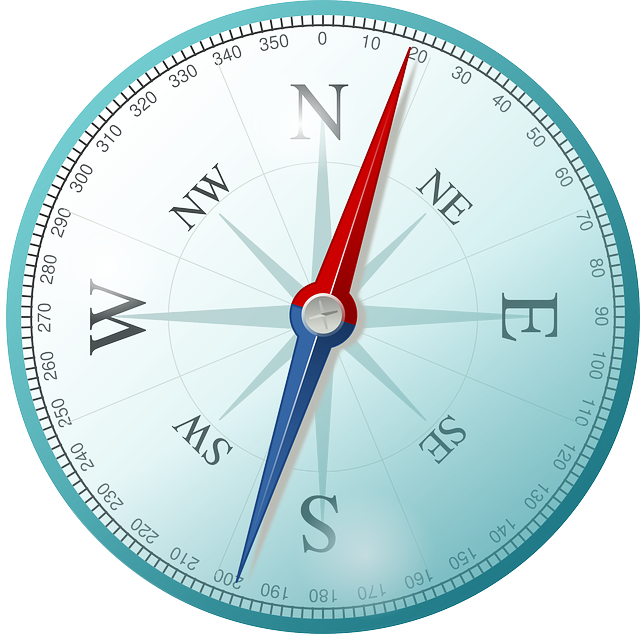An indispensable instrument in the arsenal of architects is the topographic map. Its significance lies in its ability to ensure the architect’s alignment with the optimal path in their creative endeavors. By harnessing the insights offered by these maps, architects can adeptly discern potential hurdles lying in wait prior to the initiation of their innovative construction or design projects.
Among the pivotal junctures witnessed in the evolution of architecture, one that stands out prominently involves architects seamlessly incorporating the lay of the land into their blueprints. This transformative shift was rendered feasible by the strides taken in the realm of computer science and digital technology. These advancements granted architects the capacity to fashion intricate 3D prototypes of their visionary concepts, an enterprise that precedes the actual commencement of construction. The upshot has been a veritable surge in novel architectural concepts spanning the globe, thus yielding a profusion of expanded living spaces.
Delving into the crux of this discourse, we embark on an exploration of how precisely a topographic map serves as a guiding compass for architects, steering them deftly through the labyrinthine process of erecting or reimagining structures from their very foundations or revitalizing venerable edifices.
Exploring Topography in Architecture: Shaping the Built Environment with Nature’s Palette
In the realm of architecture, topography emerges as a fascinating nexus where the creativity of human design meets the intricate contours of the Earth’s surface. This discipline delves into the profound study and comprehension of our planet’s natural features, seamlessly intertwining them into the tapestry of terrain, landforms, and structures that define our built environment.
The canvas of Earth is adorned with an array of topographical features, each a testament to the ceaseless dance of geological processes such as erosion and deposition. Valleys, those gentle troughs cradling life-giving rivers, meandering through landscapes with purpose; ridges, nature’s proud bastions standing sentinel against the passage of time; ravines, the chiseled scars of water’s persistent embrace; hillsides, the meeting point of terrestrial ascent and descent; mountainsides, towering giants cloaked in ancient mystique; and plains, vast stretches of serenity where horizons seem to embrace eternity itself. These features, shaped by the masterful hands of Earth’s geological forces, form the backbone of topography, influencing the very essence of architectural design.
At the heart of comprehending topography lies the topographical map, an enigmatic guide that unravels the secrets of Earth’s surface. Beyond being a mere visual representation, topographical maps serve as conduits of understanding, revealing a vivid tapestry of rivers that weave through valleys like threads of life, mountains that pierce the heavens, forests that cloak landscapes in shades of green, and cities that pulsate with human vitality. These maps, rich in detail and purpose, decode the language of Earth’s topography, offering insights into its mysteries.
The importance of deciphering the topography extends beyond its aesthetic allure, for it carries the potential to unlock profound insights into the essence of place and space. A topographical map is more than just an artifact; it is a beacon for architects, geologists, surveyors, and construction virtuosos alike. Characterized by the meticulously etched contour lines, these maps hold the key to understanding the dynamic elevational interplay of hills and mountains that grace the Earth’s skin. Such lines, thoughtfully spaced at intervals that mirror the scale of the map, encapsulate the elevation of neighboring locales, acting as rhythmic echoes of the Earth’s undulating surface.
For architects, the topographical map metamorphoses into a treasure trove of inspiration. It is a dynamic tool that fuels the artistic engine, enabling the creation of designs that seamlessly intertwine with the natural world. Architects, akin to modern-day alchemists, distill the essence of valleys and peaks, of slopes and plateaus, to infuse their designs with an unparalleled harmony. The design is no longer constrained by the rigidity of straight lines and geometric forms; instead, it becomes a symphony of curves that mirror the Earth’s grace. It enables them to sculpt spaces that embrace the contours of nature, fostering a symbiotic relationship between the constructed and the innate.
In the realm of architectural innovation, topography unfurls its wings as an accomplice of creativity, an interpreter of nature’s stories, and a catalyst for designs that transcend the ordinary. It nurtures a communion between human aspirations and Earth’s silent whispers, birthing structures that resonate with the very essence of the land upon which they stand. As architects continue to explore the boundless possibilities of topography, they weave a narrative that bridges the chasm between human ingenuity and the ancient cadence of the planet, ensuring that the tapestry of our built environment remains harmoniously entwined with the grandeur of the natural world.
The Role of Topography in Architectural Designs
Understanding Topography and Its Significance:
Topography is an in-depth study of the earth’s surface, encompassing various elements like soil composition, elevation differences, climate variations, and other land features. This comprehensive field provides a detailed picture of any region’s geographical makeup.
The Interplay of Topography and Architecture:
When architects design structures, topography often plays a pivotal role in their decision-making process. The region’s landforms, be it hills, valleys, or flat terrains, impact several architectural factors:
- Choice of Natural Construction Materials: Depending on the region’s geological richness, specific materials become preferable. For instance, in rocky terrains, it might be more feasible to use indigenous stones or rocks as building materials, as opposed to areas with clay-rich soils where brick or adobe might be more appropriate;
- Site Selection and Building Design: The undulating contours of the land influence where a structure can be most suitably located. A hilly region might offer an opportunity for a house with a stunning panoramic view, whereas a flat plain might provide the foundation for a sprawling estate. Architects must understand these nuances to integrate their designs seamlessly with the land;
- Landform Patterns and Erosion: Topography plays a role in how the land evolves over time. The flow of water, drainage, and erosion patterns can affect a structure’s long-term viability. For instance, building on a floodplain without proper measures could lead to water damage, whereas setting a structure atop a hill without considering wind patterns might risk its stability;
- Cost Estimation with Topographic Maps: These maps serve as essential tools for architects. They provide detailed visual representations of a region’s elevation, gradients, and landforms. By analyzing these maps, architects can make informed decisions about excavation, land leveling, and other construction-related costs.
Other Factors Influencing Architectural Decisions:
Beyond topography, a myriad of factors shape the architectural landscape of any region:
- Socio-Cultural Influences: The lifestyle and cultural values of the inhabitants of an area play a significant role. For example, regions that prioritize communal living might favor designs that encourage community spaces, while others might focus on individual housing units;
- Economic Considerations: The financial status of a region can dictate the scale and luxury of its constructions. Affluent areas might see more high-rises and lavish estates, whereas economically disadvantaged regions might focus on functional, affordable housing;
- Technological Advancements: As technology progresses, so do architectural methods and designs. The rise of green building practices, for instance, has emerged from technological advancements combined with a growing awareness of environmental concerns;
- Cultural and Historical Significance: The history of a place can profoundly influence its architecture. In regions with rich histories, architects often incorporate elements that pay homage to the past, blending tradition with modernity.
The Influence of Topography on Architectural Design
Topography, which refers to the physical features of a piece of land, including its elevation, contours, and the presence of natural features like hills, valleys, and slopes, plays a pivotal role in determining the design and structure of buildings. The assessment of the site’s topography is crucial before embarking on any construction project.

As urbanization continues to expand, architects and builders increasingly encounter plots with challenging topographical conditions. Such areas, notably those with pronounced slopes or undulating terrains, not only present architectural challenges but also necessitate the collaboration of a larger and often specialized construction workforce. This ensures that construction is carried out efficiently, maintaining both the timeline and budget constraints.
The intrinsic topography of a site doesn’t only determine the feasibility of construction but also influences the aesthetic and functional aspects of a building’s design. It is more than just the surface; it’s an integral part of the environmental context within which the building sits.
Taking a hilltop as a case in point, it presents unique challenges. Constructing a tall building on uneven terrain would demand meticulous planning. This is because each floor would need to be designed to account for the varying ground levels, ensuring stability and safety. If not designed correctly, the weight distribution across the uneven terrain might jeopardize the structural integrity of the entire building.
Furthermore, topography can also be harnessed to a building’s advantage. For instance, a sloping site can inspire designs with staggered terraces or multi-level gardens, creating spaces that are both functional and visually appealing. Thus, understanding and respecting the topography of a site is not just a constraint but can also be a catalyst for innovative architectural solutions.
The Significance of Topographic Surveying for Architectural Endeavors
Topographic surveying stands as a cornerstone technique in the realm of architectural and engineering design. By focusing on the meticulous measurement of elevation variations across different points on the Earth’s surface, topographic surveys often employ advanced trigonometric techniques to ensure precision.
The information gleaned from these surveys provides architects and engineers with a treasure trove of data, crucial during the preliminary stages of construction projects. These professionals rely on an in-depth grasp of the land’s contours and features to conceptualize and craft structures that harmoniously blend with or adapt to their surroundings.
But why is understanding the terrain so vital for architects?
Detailed Site Analysis: An intimate knowledge of the site’s topography allows architects to anticipate challenges and opportunities. This could relate to water drainage, sunlight, wind patterns, or ensuring that structures are both aesthetically pleasing and functional within their environment.
- Innovative Tools for Precision: With the rapid technological advancements in the field, architects have at their disposal a range of sophisticated tools for topographic surveying. Instruments like total stations and laser scanners have revolutionized the surveying process, enabling architects to pinpoint and measure otherwise inaccessible locations on Earth’s surface;
- Integration with Digital Design Platforms: Once the survey data is gathered, it doesn’t remain static. Modern architects integrate this data with cutting-edge architectural software tools such as AutoCAD or 3D modeling platforms. This seamless integration ensures that the site’s features are replicated virtually with a high degree of accuracy, enabling architects to draft, model, and revise their designs in a virtual space before any physical construction begins.
In essence, topographic surveying is not just about understanding the lay of the land. It’s about equipping architects with the data and tools they need to envision and create structures that are not only functional but also in harmony with the natural world around them.
Significance of Terrain & Ground Composition
The landscape’s contour and the quality of its soil are paramount considerations when envisioning an architecturally impactful structure. Before laying out their blueprints, architects must prioritize understanding the terrain and soil composition. This ensures not only that the building stands resilient against nature’s challenges but also promises a conducive living environment for its occupants.
Conclusion
Maps serve as an indispensable instrument for architects throughout their design process. They empower these professionals to visualize design concepts before bringing them to life in physical structures. On-site, architects benefit from maps as they document observations, evaluate diverse layout possibilities, and assess a building’s visual appeal before finalizing it. Crucially, topographical maps are invaluable for architects, aiding them in devising building configurations and strategizing construction.
